Cervelo’s P5X
Usually you recognize an iconic moment only in retrospect. We’ve had two in triathlon bike design and technology: In 1989, when the geometry and riding position was first identified and placed into a bike for sale; and in 2005, when Cervelo introduced the P3C, a bike so good it probably is still (with its minor retool in 2013) the best selling bike model in triathlon.
I believe 2016 will be such a year, not because of any specific bike, but because manufacturers finally threw off the chains of the double-diamond design.
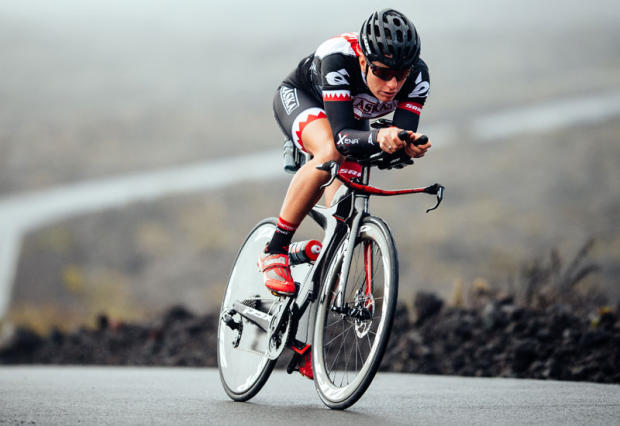
Dimond and Ventum started the ball rolling with homages to a generation when Softride, Lotus and Hotta stretched boundaries and imaginations, though not necessarily in geometries that showed an understanding of tri bike position and handling. This autumn TriRig and Diamondback pick up where the brands of yesteryear left off, and Cervelo with its P5X adds an exclamation point to this motif.
Design Imperatives
The P5X began the way all products should begin, once a manufacturer is tired of dinking and dunking. Cervelo’s P2C, Trek’s 2014 refresh of the 2011 Speed Concept, Felt’s IA 10, QR’s PR3, this is dink and dunk. Incrementalism. Nothing wrong with that.
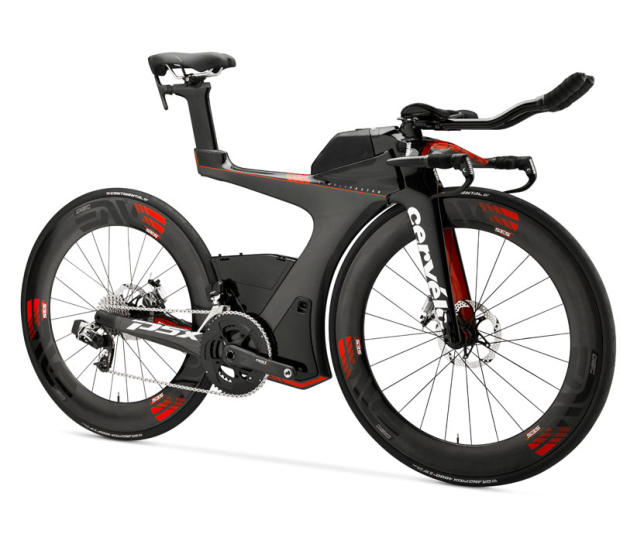
But if you want to create a new product platform on which your company intends to hang its hat for years to come, the gold standard in industrial design is to reimagine your product not through your prism but through your customer’s.
Trek was the first to do this in triathlon, with the 2011 Speed Concept. What do triathletes need during the bike ride? Besides the bike itself? Water. Food. Spares and tools. Electronics. That Speed Concept was the first attempt to look at the bike as a system, from the customer’s viewport.
Cervelo went through this same exercise, but with a wrinkle: It didn’t take as axiomatic the need for a double-diamond frame architecture.
Bike makers can miss the big picture, as when it recognizes carbon’s ability to escape the prison of tubular shapes, only to make tubular shapes out of carbon (e.g., road handlebars). Cervelo literally began the P5X with a computerized block of mass and whittled away at it until it found what it considers the best shape to date, assuming carbon is the frame material of choice.

But there were some caveats. Storage. And the ability to carry a single, or two, or three bottles and to carry them between the arms, on the frame, or behind the saddle, as the rider so chooses.
In other words – and this is important – Cervelo has chosen not to mandate how or where fluid is carried. Maybe the best approach is that taken by Ventum and Specialized, who tell you where the fluid is carried. Cervelo says, “We might think you should place the water in a bladder and bury it in the frame, but our data – literally counting configs on bikes at races – tells us you will most likely ignore our advice and place the bottles on the bike.” Cervelo carves away at that hypothetical mass, revealing what it feels is the perfect shape of the frame. But, this “perfect” shape assumes a frame that will host all our paraphernalia, since so many of us roll our bikes into transition loaded down like the Joad family truck on its way to a new life in California.
Is the P5X a beam bike? Yes. Sort of. What do you call the Diamondback Andean’s shape? I don’t know, but if a Dimond and a Diamondback mated and had a baby the P5X might well pop out.
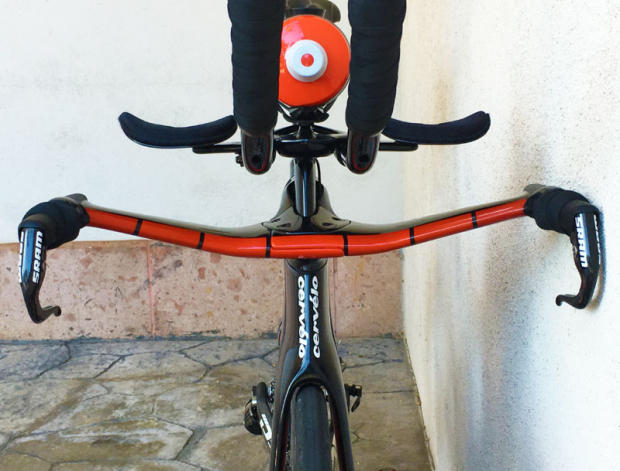
When I first saw the P5X I immediately recalled the Baracchi, the very first Cervelo co-founders Phil White and Gerard Vroomen ever made (though not commercially). The Baracchi, and the P5X, are beam bikes with down tubes designed to continue the aerodynamic continuity of the airflow as it moves off the front wheel and toward the rear.
Storage and Hydration
The P5X has 3 storage elements on the bike, one of which is removable. I am reminded of the Torhans hydration system built specifically for Felt’s DA, and that filled the space between the down and seat tubes. It’s called the Speedcase when Cervelo makes it, and it’s more structural than the Torhans bottle, which it needs to be because on the Speedcase sits bosses for a water bottle cage. This cage can be placed on the Speedcase, or the Speedcase removed and the cage placed on the frame itself.
The second storage element is the Stealthbox and I can imagine the groan that came from Cervelo when the Diamondback Andean was debuted last month, which showed precisely the same storage idea in exactly the same place (in front of the crank).
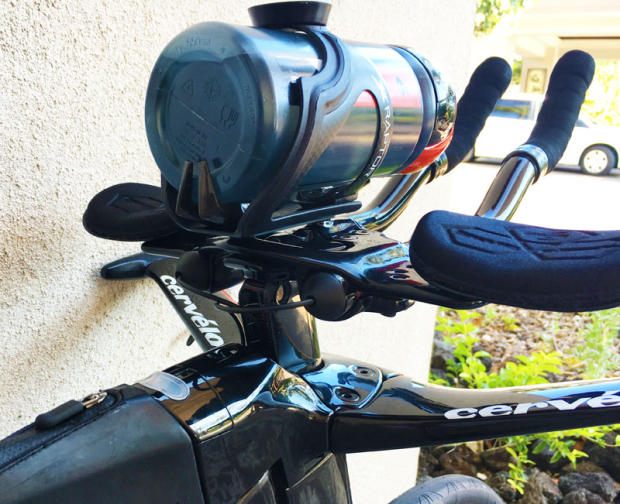
Finally, there is place for storage on the top tube, and this “Bento Box” behind the handlebar, called the Smartpak, isn’t simply storage above the top tube, but the storage area continues down into the top tube.
Strategic Partnerships
Last summer only 22 percent of Slowtwitchers felt there was a bright future for disc brakes in tri bikes. Move forward a year, this past June, that number climbed to 30 percent. I was always in the minority, thinking that discs have a future in tri, but only if one company could take on the front end of the bike: handlebars, wheels, fork, brake.
In my mind there were 3 candidates: Enve (which made aerobars, CX forks, wheels); SRAM (making disc brakes, aerobars and wheels); and 3T (wheels, aerobars, CX forks). I asked these companies from time to time about such a hypothetical project.
I can only wonder what Enve thought when I asked them what they felt of the prospects of disc brake tri bikes if they were able to make a fork, a bicycle front end, and a wheel that did not contemplate rim braking. What they didn’t tell me was, “We’re in the middle of that experiment right now; we’ll let you know!”
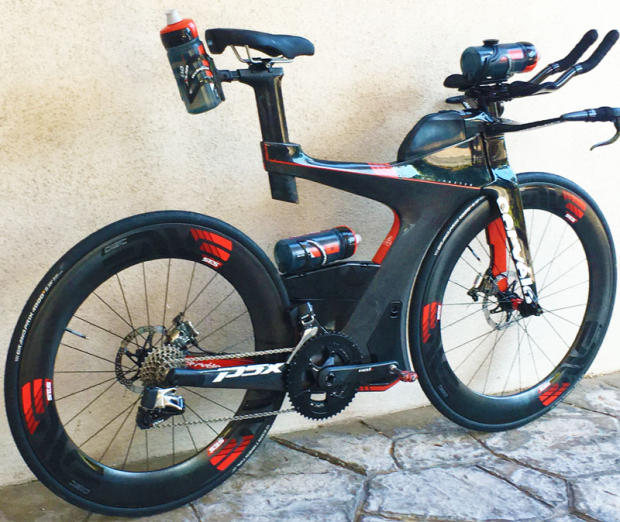
Enve makes the wheels, aerobar and fork on the P5X and when our reader forum asked why SRAM parts and Enve wheels I cryptically said yes, there’s a reason. This partnership is the reason.
The other strategic partnership is with HED, which is making the P5X frame. This is worth its own discussion and you’ll find this separately on Slowtwitch.
Main Frame Elements
Some in our reader forum who saw spy shots said it was, “low slung,” even “droopy.” Yes. Were an industrial designer to have his way the beam would have taken more of a straight shot between the head tube and the saddle. It would have looked more racy and, honestly, more appealing to my eye. Two reasons why it isn’t made that way: saddle height adjustability and stand-over height.
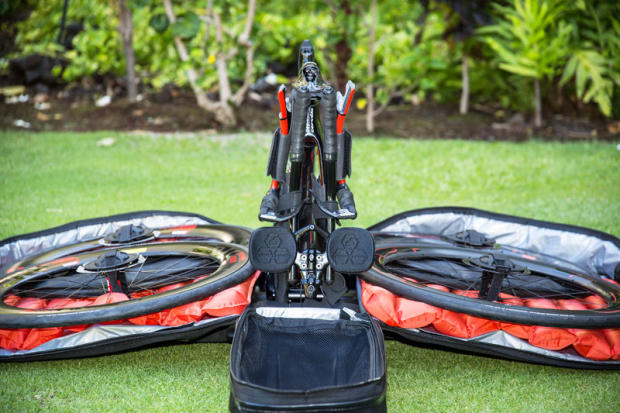
Saddle height is obvious. Look at the bike. You have more room to adjust the saddle downward with the low-slung beam, and you miter the bottom of the seat post after you have your saddle height determined (so that it doesn’t stick out below the beam).
Stand-over height is not simply a nice feature. A lack of such is often a point-of-sale disqualifier.
Adjustability
Beyond the seat post, discussed above, and the wide fore/aft (seat angle) range the Ritchey seat post system gives this and many other tri bikes, the P5X has one of those “why didn’t I think of it” ideas that just makes sense. The aerobar sits on something very much like another, smaller aero seat post. The same wedge mechanism that fixes the seat post sits in the front of the bike and fixes this.
Anybody who owns either a Cervelo P5 or a 2014 or newer Speed Concept knows it takes an act of Congress to change the armrest height once the bike is built. Not so here. This bike is monumentally easy to adjust, every component, every plane, every axis. I couldn’t find a need for more than a 4mm and a 5mm Allen to work on the bike.
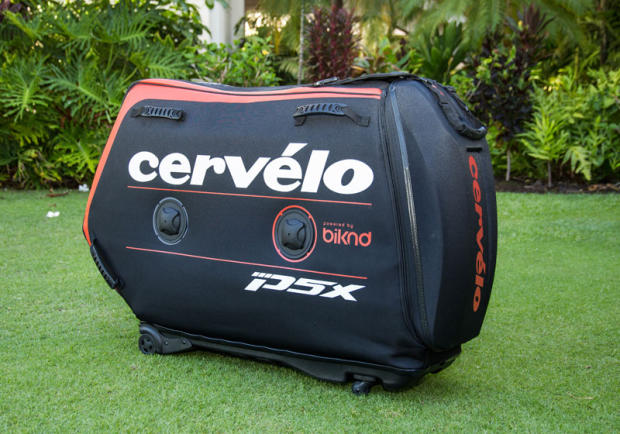
During the first ride I needed to stop 3 times for minor adjustments: twice to put the seat down, once to put the bars up. Each time it was simply a 4mm Allen bolt, the stop was under a minute, and I was back riding. Not the typical superbike experience.
Ease of Use; and of Travel
Cervelo partnered with Biknd to make a travel case just for the bike. It’s pricey at $800 and change, but it’s exactly for this bike, takes 4 wheels, and paraphernalia. It’s basically this company’s Helium V4 model which sells for $650, but with a number of custom straps and ties just for this bike. Also, this bike takes 12mm thru axles and I don’t know if the standard Helium V4 is prepared for these.
Geometry and Fit
The P5X is built in 4 sizes. The bike uses stack and reach as frame inputs, which means if you use a pad x/y sizing system it’s entirely scalable. They’ve chosen to use x/y to the back of the pad, and the pad is about 90mm long fore/aft, so if your nomenclature goes to pad-center then subtract 45mm and you’re ready for this fit system.
Here is a fit matrix in one page. Cervelo says they’ll use a query/response database system that works pretty much like Felt’s jury-rigged Excel spreadsheet designed to do the same: type in your pad x/y and here are your 2, 3, 4 solutions.
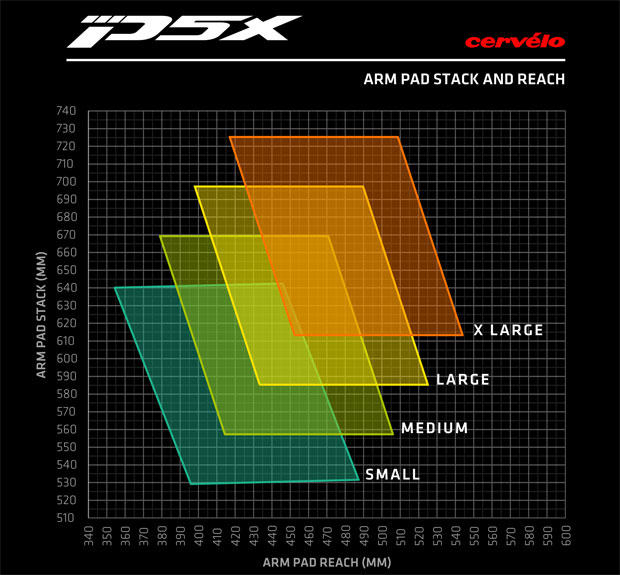
Why multiple solutions? Because these matrices overlap, as you can see. If you’re on the low side of a L and the tall side of a M then you’ve solved the fit problem and now you make a handling decision.
While the query/response tool would be useful, I quite like just seeing this matrix. To me, the default position is at the bottom of the parallelogram, halfway between the front and the back of that shape. That’s right in the middle of the fore/aft aerobar adjustability and with the pads slammed. However far my pad y (pad stack) sits above the bottom of that parallelogram that’s how many millimeters I need to pull that seat post like stem up (and yes, there are delineators in 2mm increments on the stem). However far my pad x sits in front of or behind the center of that parallelogram, that tells me what I need to do to make the bike fit (put the pads in a rearward hole, etc.).
What is the max fore/aft range is, per size? About 90mm. Look at that chart; you can figure it out it for yourself in 15 seconds. It’s that easy.

You shouldn’t use standard Cervelo sizing you’re familiar with to make your decision; nor should you rely on another bike company’s determination of S, M, L and XL. I’m a size L in a Speed Concept. I could be either an L or an XL in a P5X. I rode the L. It’s fine. But I would have to think hard about the XL, quite frankly.
One final note on fit. The pursuit bar, as you might can tell, is palindromic, and can be angled up (maybe 15 degrees?) or down. It’s also made in 2 pieces, which is brilliant! It makes this bike so much easier to pack for travel!
Disc Brakes
No, this is not a mechanical system. It’s hydraulic. Yes, there are mechanical cables. The TRP brakes used in this bike have their fluid cylinders at the caliper. These are flat-mount, reasonably aero (as disc brakes go) calipers that are a thematic fit for this bike.
How are these brakes? Okay. They stopped the bike. I much, much, much prefer messing with these than messing with brakes between the fork legs or behind the bottom bracket. Just give me a standard set of brakes, like on my road bike, or give me disc brakes. I’m tired of farting around with brakes underneath the bike.
How it Rides
I rode it up, I rode it down, I rode it around corners, in the wind, on the flats, I rode it in the saddle and out. I can’t image what I would’ve wanted to do with this bike that I didn’t have the chance to do in the two days I was aboard it. (If you're wondering why there's a couple of pics of an old fart on this bike above and below, that's me, testing it out.)
Let’s get to it. What was my impression?
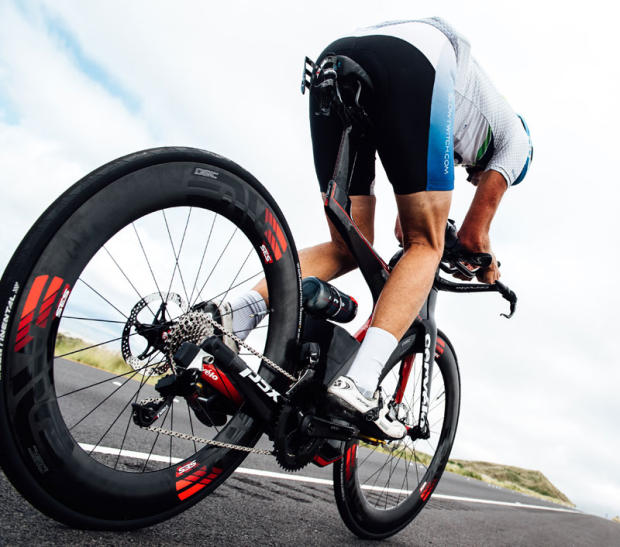
I am not a weight weenie. If you are, this is not your bike. It’s probably two pounds heavier than a typical fairly lightweight tri bike. Maybe more than two pounds. But I am not bothered by this, because I remember what bikes weighed when I started bike racing.
My very first concern was whether there were any noises or rattles in the bike, because of all the storage options. None. So far, so good.
The bike rides very solid. I did not notice any passive suspension in the beam which is either a good or bad thing depending on whether you want any. There is absolutely no smoosh to this bike owing to the lack of tubes (seat stays, down tube). It is every bit as solid and stiff, and more, than any tri bike I’ve ever ridden or any road bike for that matter.
It handles ably. It is fine in the wind. The only problem anyone will have with this bike is the typical problem you’d have with the 70mm front rim this bike comes with. The first thing you’ll need to do is buy a 40mm wheel for windy days, because you can’t come to every race with a 70mm wheel and assume you’ll be fine.
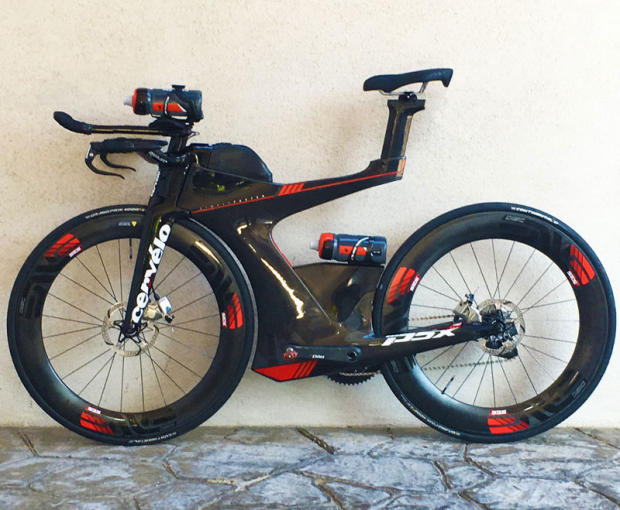
I liked the bike. There are plenty of bikes I don’t like. What would I change? The extension shape of the Enve bar. The tallest point on that bar is not planar with the armrests. I do like the Enve armrests. Fortunately, extensions you can swap out. The image above is of the bike I rode and I'll confess something: I Photoshopped it. I "cut" the seat post off below the beam, and I flattened the extensions the way I'd ride them. This lets me (and maybe you) see more of how that bike would be if I owned it. Oh, and I whacked off the behind-the-saddle cage. I don't like my bottles there.
Aerodynamics
I’m going to tackle this in a separate article. It’s too big a subject. What I can’t say is, “This bike is fast!” I can’t say it because I don’t know it. Nobody would, or could, based on a few rides. It either would require extensive field trials or testing of another sort, and I’ll discuss this elsewhere.
Price
The magic question. This bike, with SRAM eTap, Enve wheels, ISM saddle and so forth, will set you back $15,000. If you’re on a budget, how about $11,000? That’s its price with Ultegra Di2 and a set of wheels HED makes for this bike.
Is there justification for this price? Is there value in exchange for the price paid? Not in any kind of straight line scale of payment and consideration in return. But that’s not the point of this bike.
Felt’s final iteration of its DA, when first announced – and this goes back some years – was according to my memory something like $12,000. I see the P5X now as I saw the DA then, as a halo bike that kick-started a platform. I did not expect Felt’s DA or for that matter its first IA to remain their original introduced prices (year over year).
Likewise I expect that in years to come this platform will be available for prices that you and I might find more palatable. Except, that is, if the “you” I’m talking to are quite fine with $15,000. This is where we lay our culture wars aside and say, bless your hearts you one-percenters, please be an early adopter and pave the way.


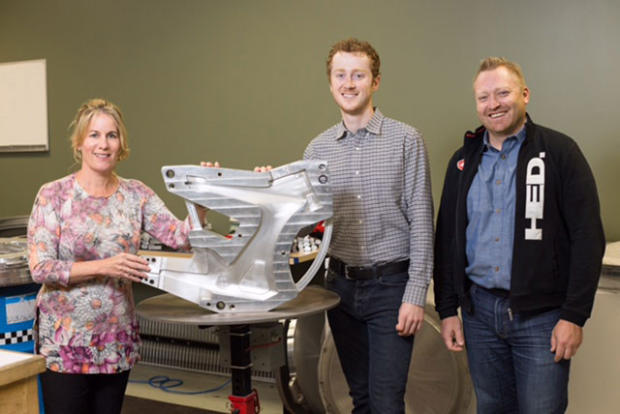
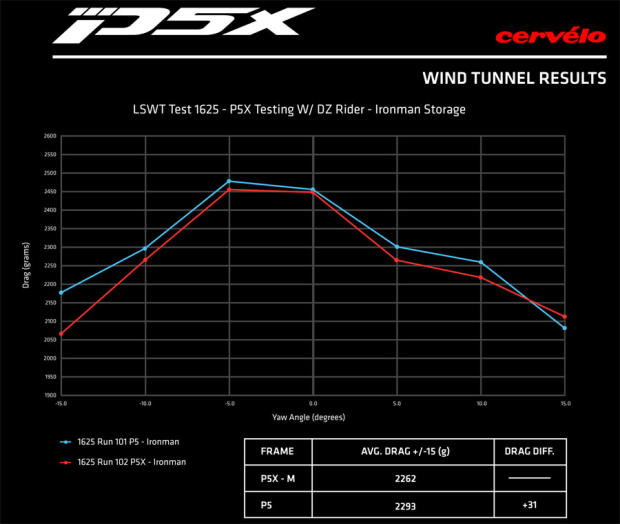
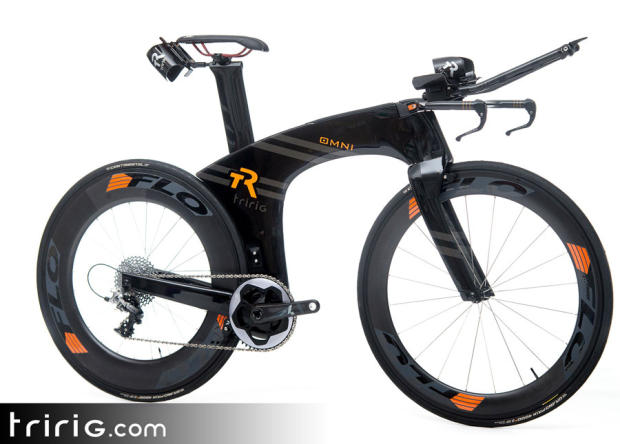
Start the discussion at slowtwitch.northend.network